Starting a new project by building on the shoulders of the previous one isn’t just good practice, it's the norm for most creative endeavours. You get to take the lessons learned from all your trials and tribulations throughout the project, as well as the collective experience of all the other team members.
This was not the case, however, when I began work on 2025’s Revenge of the Savage Planet.
In many ways, Revenge of the Savage Planet’s story was a metaphor for its development. After Typhoon Studios was shut down by Google in 2021, the founders reformed and founded a new studio called Raccoon Logic. They regained the rights to the Savage Planet IP and got to work on a sequel. They had all their source code, art and (crucially) the whole Wwise project. Unfortunately not everyone from Typhoon decided to move over to the new studio, and one of the people that didn’t move over to the new studio was the previous Audio Director. This was where I came in.
My first few weeks were a lot like being given the keys to an F1 car after spending years driving a Yaris. I had worked with Wwise for years and so I knew fundamentally how everything worked, but I needed to unravel all the decisions made and make the project second nature so that I could move forward with pre-production. Especially with the shift from a first-person metroidvania to a third-person action platformer.
A Change of Perspective: From First-Person to Third-Person
The first major change that we made from Journey to Revenge was going from 1st person to 3rd person. We were making a comedic game, and as our animation director said, there is only so much funny stuff you can do when you can only see the players hands.
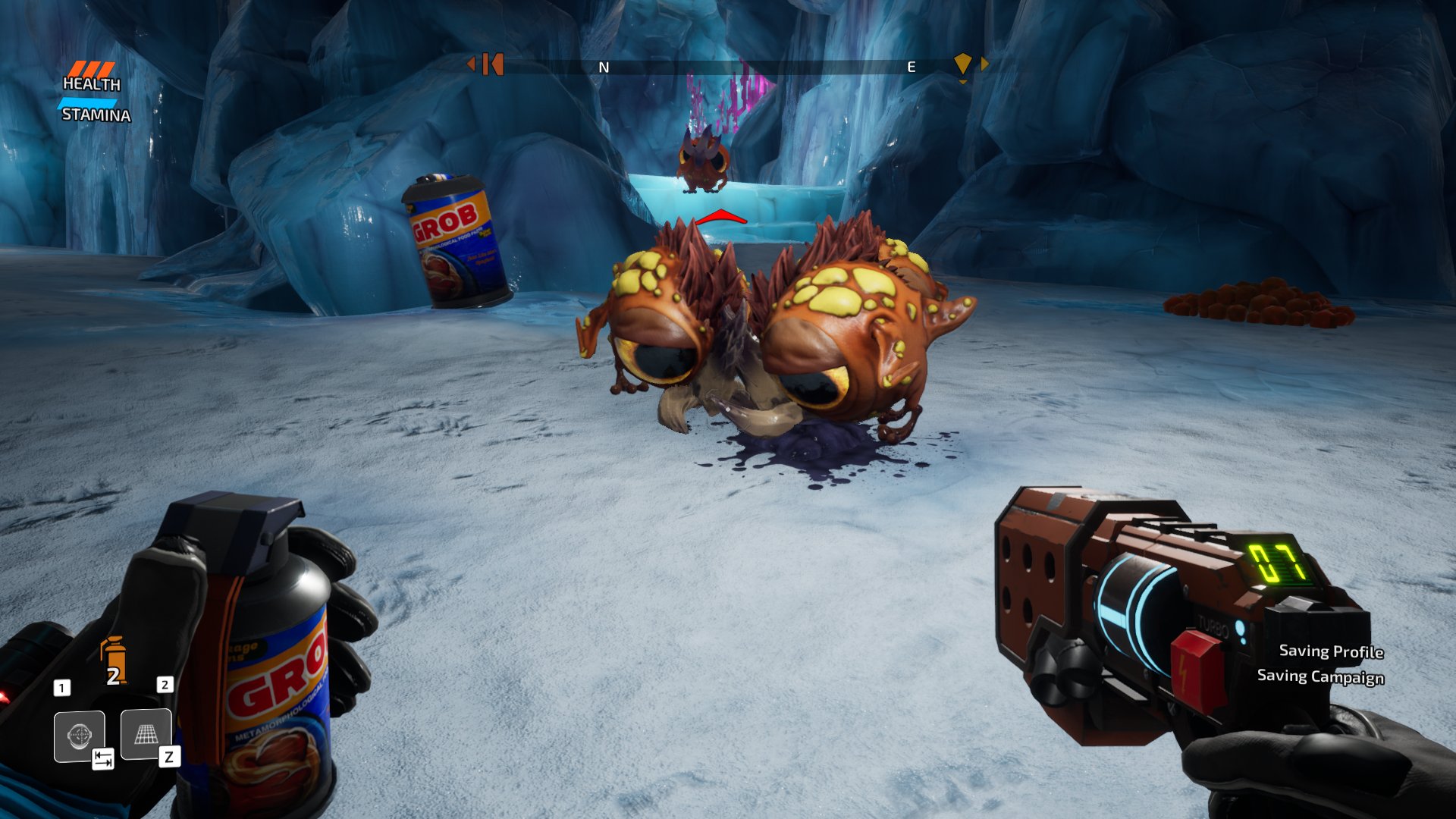
Humour? |
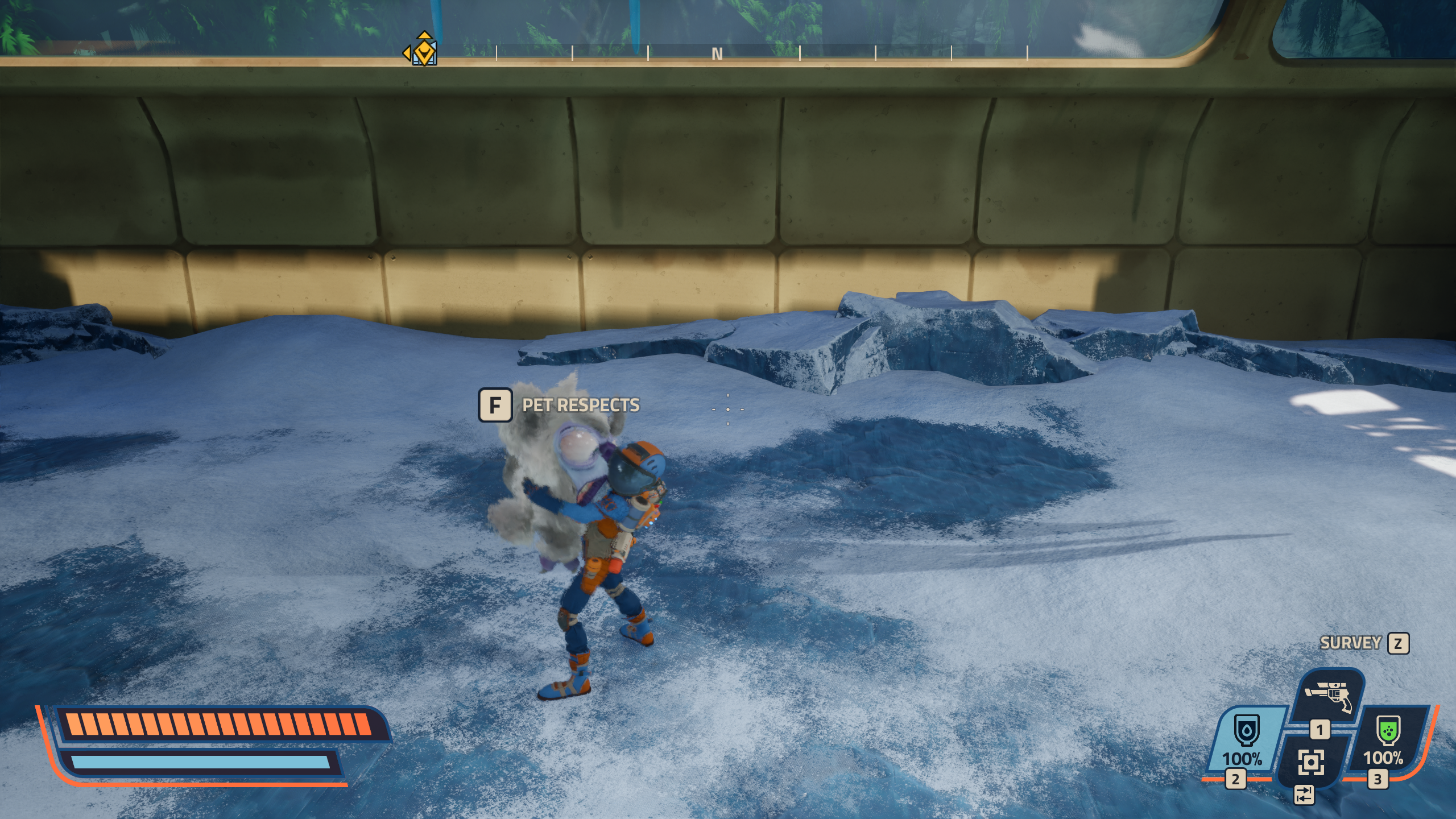
Humour! |
The Typhoon team had worked on this slightly before being shut down, but there was still a whole game’s worth of assets that were designed to be experienced in first person. I started tackling this by building a gym with two of the things I knew for sure would be in Revenge: the Gun and the Pufferbird. The Pufferbird had become the de facto mascot for the game so it seemed right to use that as my proverbial canary. Step one was redefining the listener position, as I wanted the player to be immersed in the world, but with the consideration that there could be a second player locally. Then I started to make template attenuation presets to give me jumping off points for the player movement and foley, gunplay and creature sounds. After that the Multi Editor made short work of applying those new attenuation sets all over the rest of the project, which quickly got a solid third-person mix going for our vertical slice.
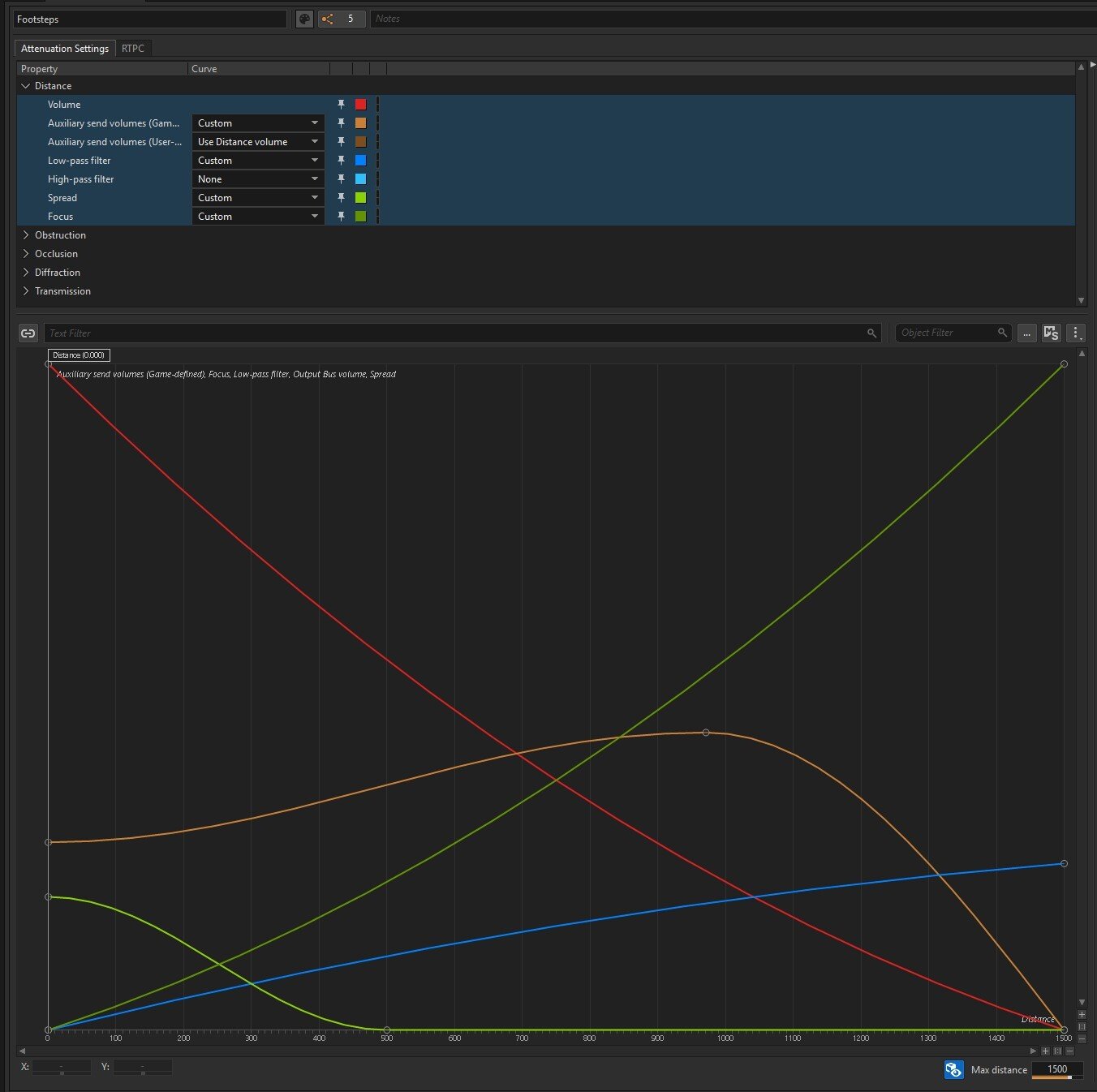
Journey to the Savage Planet: previous footsteps attenuations
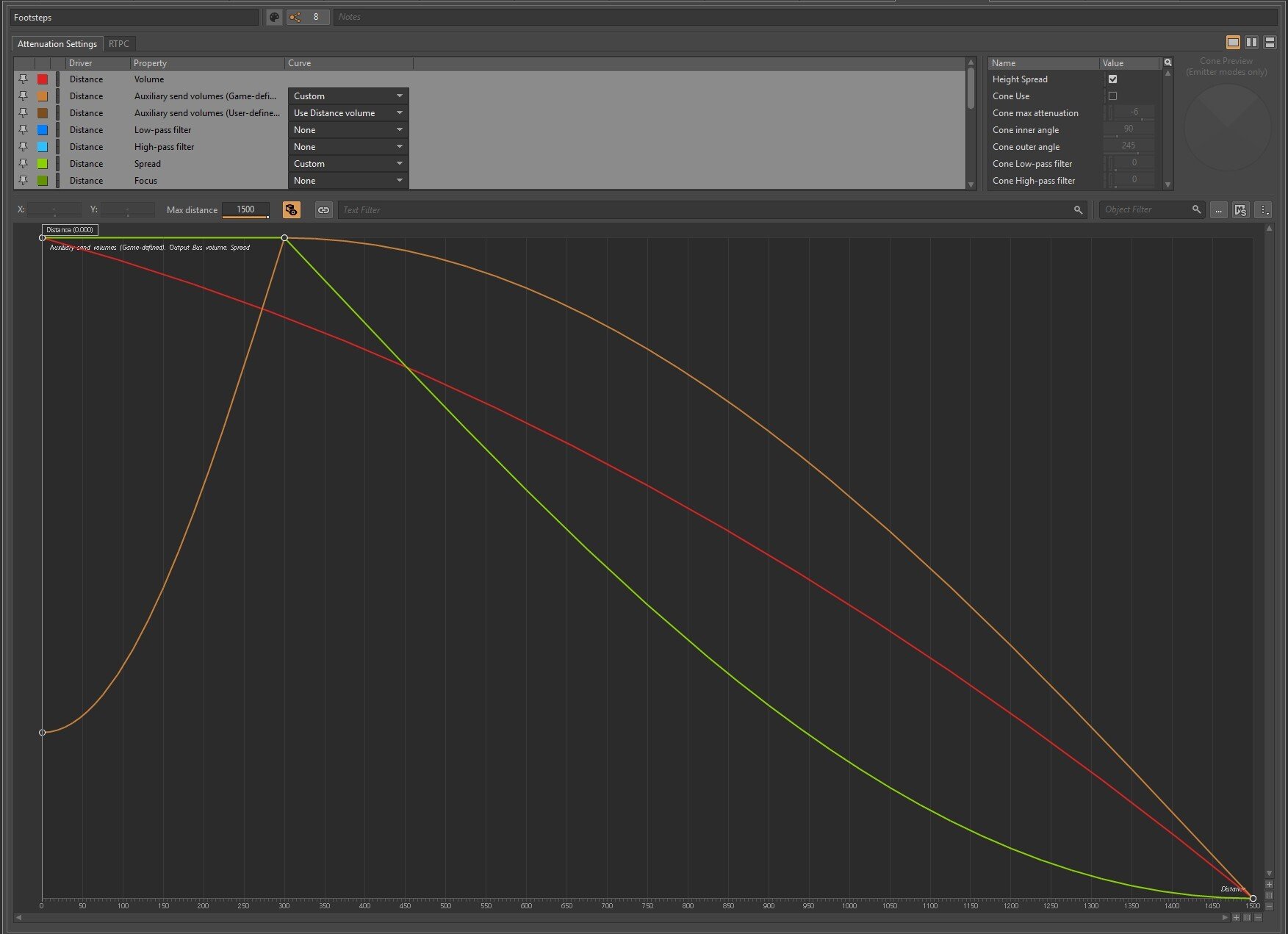
Revenge of the Savage Planet: New footsteps attenuation to show the change to 3P. Making the spread cover the players steps as prominently as 1st person, but rolling off so the co-op player gets directionality.
Musical Matters: From World to Worlds
Fairly early on we knew that instead of having one planet with a number of biomes we would be switching to the One World/One Biome ethos. This allowed us to give each world not only their own visual identity, but musical identity too. The main musical motif was written by our composer Samuel Laflamme early in production and then we spent a lot of time adapting it to each planet with their own unique flair. For our desert planet Xephyr, I brought out my acoustic guitar and recording chords, sprays and even used a cello bow to get lots of different elements for Sam to incorporate into the music layers. Zenithian Rift was our ice and lava themed planet, so for that one we added a lot more electronic elements and instead of warm organic acoustic guitars we laid down heavier distorted electric guitars.
Hear the differences in the musical pieces of Xephyr & Zenithian Rift
This switch to many worlds also gave us a lot more room for the player to roam around, which necessitated a re-assessment of how the music was being played back. In Journey, the music was set up in a sort of “stacked intensity” interactive setup. There was one RTPC called “ActionLevel” that was being fed an integer by different actions in the game. This integer would feed a Switch Group that would swap between 5 layers of music from the lowest (idle) to the highest (full intensity combat).
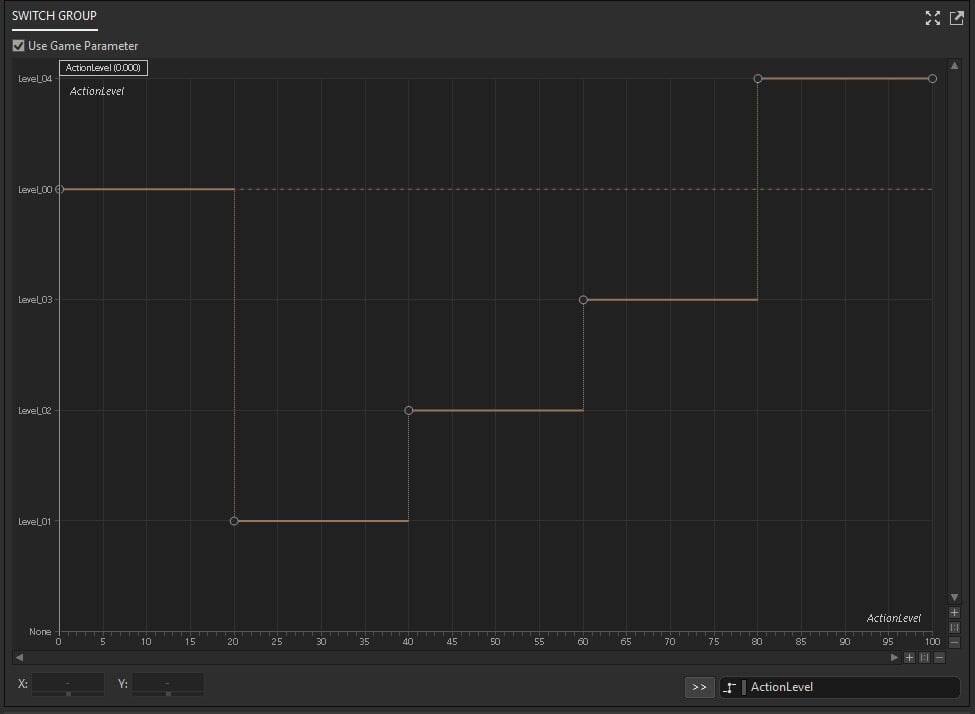
Journey to the Savage Planet: The old switch that was fed by the game RTPC
If the player was attacked, it would add a value to essentially force the higher combat intensity levels, and then killing the enemy would remove that value, bringing it back down to idle or exploration levels. In practice however, this led to an almost feast or famine result for the music. If a player was rushing through the game and traversing the world quickly, the game would essentially be stuck at the highest level of intensity forever, as it wouldn’t have time to naturally decay. Other players would have almost no music except for brief intense periods that would start and stop abruptly.
For Revenge of the Savage Planet we chose to adapt the music to the more “open world” nature of the levels. Since there were lots of large open areas we would push the ambiences up to let the player immerse themselves in the alien landscape, then we would define music “zones” that would alert the player to points of interest. For puzzle areas, we would just drop a volume that would set the music state to the “Puzzle” state. Enemy spawners had a component that would create a volume on a user-defined radius that would set the music state to “Danger”.
Our music state system was built on a hierarchy that we could define in an Unreal data table. Each music state was assigned a priority value. In the beginning we defined values for idle, exploration, puzzle, danger, combat, and boss music, but by the time we shipped we had added values for transitions, post combat music, and other various level or boss specific music cases.
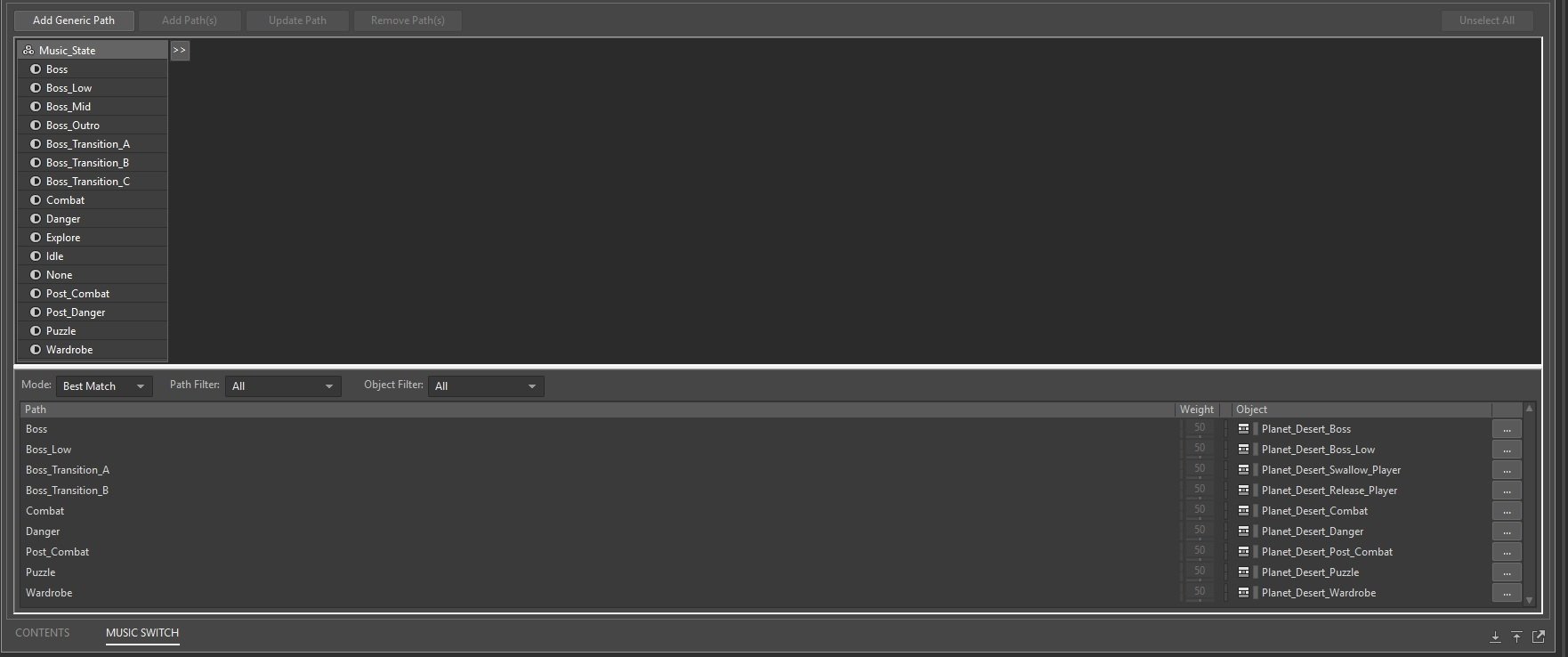
Revenge of the Savage Planet: The new state based music settings
Letting out the Voices in your Head
As we kept the silent protagonist trope from Journey, we once again had to rely on a narrator to comment on the world and give information to the player. In Journey this was EKO, a disembodied AI voice inside your head. In Revenge, we promoted EKO to a floating robot companion that would not only inform the player, but also serve as a tool for navigating and puzzle solving. We placed an emitter on the object and set all the transmissions to play off of EKO in game. This really helped the player feel more grounded in the world as the comments from EKO as well as incoming transmissions from other characters would be projected by EKO to the player, reacting with the area reverbs and really feeling like EKO was talking to the player. In an interesting twist, this small audio change ended up adding a bunch of work for art and animation. Now that EKO sounded like it was talking “to” the player, we had to make it turn around and face the player. Then we had to have the player face EKO to show that they were acknowledging them talking. Then we had to give EKO some facial animations to show that they were realistically “talking”. And finally we had to make sure to match the facial animations to the emotion of the line they were reading. In short, that was a really fun week for me.
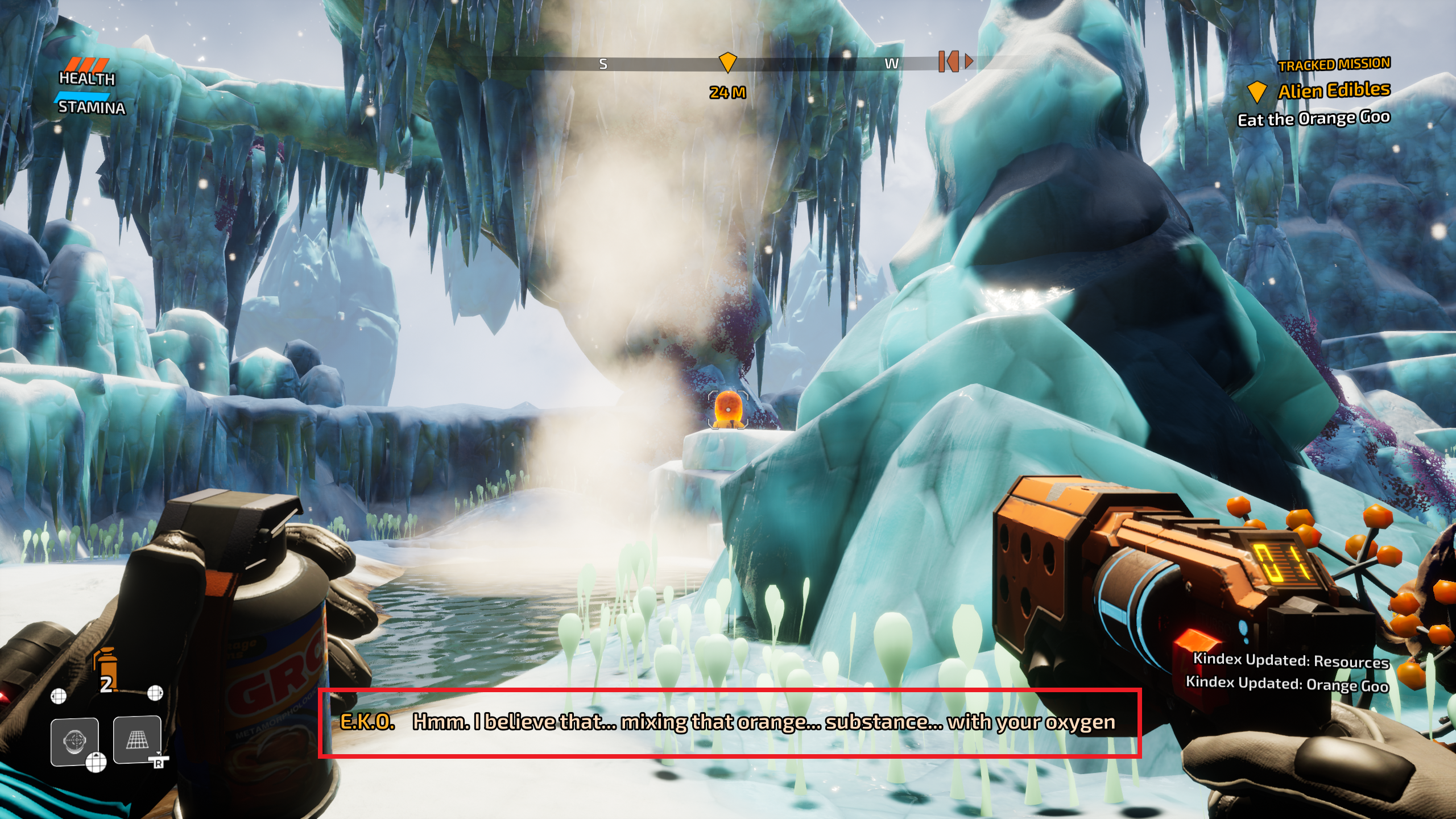
Journey to the Savage Planet: What EKO was in the old game
Revenge of the Savage Planet: See and hear EKO in the new game
Working Together: Borrowing & Reworking
One of the biggest takeaways for me from this project was that if you don’t have a lot of in-house resources to rely on, you have to really choose wisely what you want to spend your time on improving. When I looked at what we had in the project and what we wanted to add, I quickly realized that redoing everything was not only impossible, but largely unnecessary.
There was so much solid content in the Wwise project that had been brought forward from Journey. The character movement, foley, impact sounds, and world ambiences were all well done, so I saw no reason to redo those when there was so much new content coming along. We had 34 new creatures, 3 bosses and a host of new tools all with their own world interactions, plus a new UI, new HUD and plenty of new world objects all requiring new sounds.
So whenever you can avoid having to make “small_rock_impact_07” again, you should. We worked with the same audio outsourcing team as on Journey and it helped free up so much time to focus on system design and other high profile “marquee” sounds. Ultimately, the decision to borrow what worked from Journey & dedicate our efforts to what truly needed improvement was key.
Revenge of the Savage Planet is now discounted on Steam, so you can grab it and check out some of the things I've mentioned above for yourself. And keep an eye out - we'll soon be launching a new head-to-head competitive game mode called Bingo Brawl!

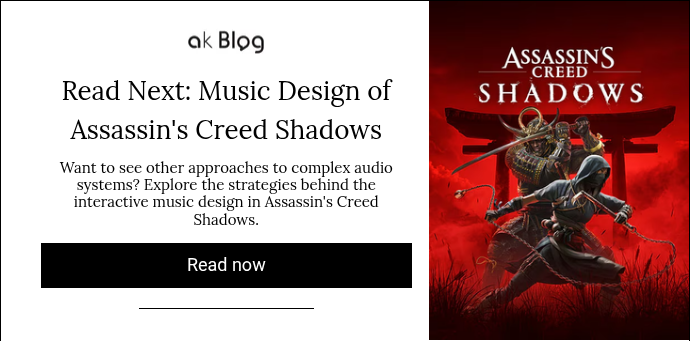

Comments